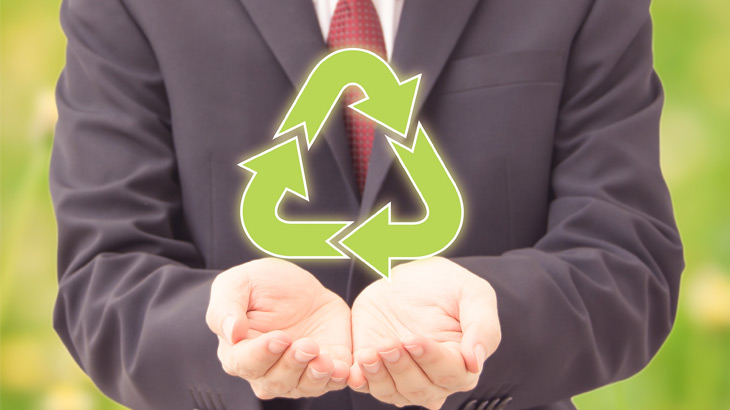Lexmark Blog
Corporate Social Responsibility(CSR)
Revisiting the Circular Economy
Circular economy, as opposed to a linear one, changes the one-way path of take, make, use and dispose into a wheel where longevity is built in at the design and manufacture stage.

TAGS: Corporate Social Responsibility(CSR)
What was the last thing you threw away? Maybe your morning coffee cup or empty toothpaste tube. Have you ever considered where “away” is? There is no such place. When we throw things away, they don’t go away, they simply go elsewhere because planet Earth is a closed ecosystem. Everything has to end up somewhere – in the atmosphere, in a landfill or in the oceans. Even the stuff we discard in space is a cause for concern.
As people start to recognise that there is no such thing as a disposable spoon (for example), they also become aware that the ability to manufacture something new, from raw materials, can’t go on forever. Dame Ellen MacArthur, the record-breaking long-distance yachtswoman and creator of the Ellen MacArthur Foundation, which works with business and education to accelerate the transition to a circular economy, sums it up well: “There was a moment when I realised that resources are finite. What you have – that’s it. There isn’t any more.”
A circular economy, as opposed to a linear one, changes the one-way path of take, make, use and dispose into a wheel where longevity is built in at the design and manufacture stage. Reusability and recyclability drives consumer choice, and there is positive impact to the business bottom line from the re-use/repair/recycling model. McKinsey research suggests that savings in materials alone could exceed $1 trillion a year by 2025 and that, under the right conditions, a circular economy could become a tangible driver of global industrial innovation, job creation, and growth for the 21st century.
Lexmark has some great circular economy initiatives. Our recycling programme, designed by our supplies-packaging engineers, processes used paper to create moulded pulp cushions, which are used to protect our products during shipping. Cost-effective, practical and made from 100 percent post-consumer waste, these packaging cushions not only provide excellent protection for our cartridges during shipping but can also be recycled.
Tonerpave, developed by leading consumables takeback programme designer, Close the Loop, is another amazing initiative dedicated to maximise the reuse of our customer’s returned toner cartridges. In 2017, Lexmark captured 625 metric tons of toner from recycled printer cartridges and manufacturing processes. Eighty-eight percent (551 metric tons) of this was used by Close the Loop for Tonerpave, which is an asphalt additive composed of recycled tires, excess toner powder from used printer cartridges, and recycled oil. Tonerpave asphalt was laid in the parking lot at our headquarters campus in Lexington, Kentucky, USA, demonstrating that it is entirely possible to rethink how we lengthen the lifespan of our products.
Embracing the circular economy is not an over-night change but a process of ongoing transformation. We are proud to be among the businesses making headway in this direction and leading others along the circular economy path.